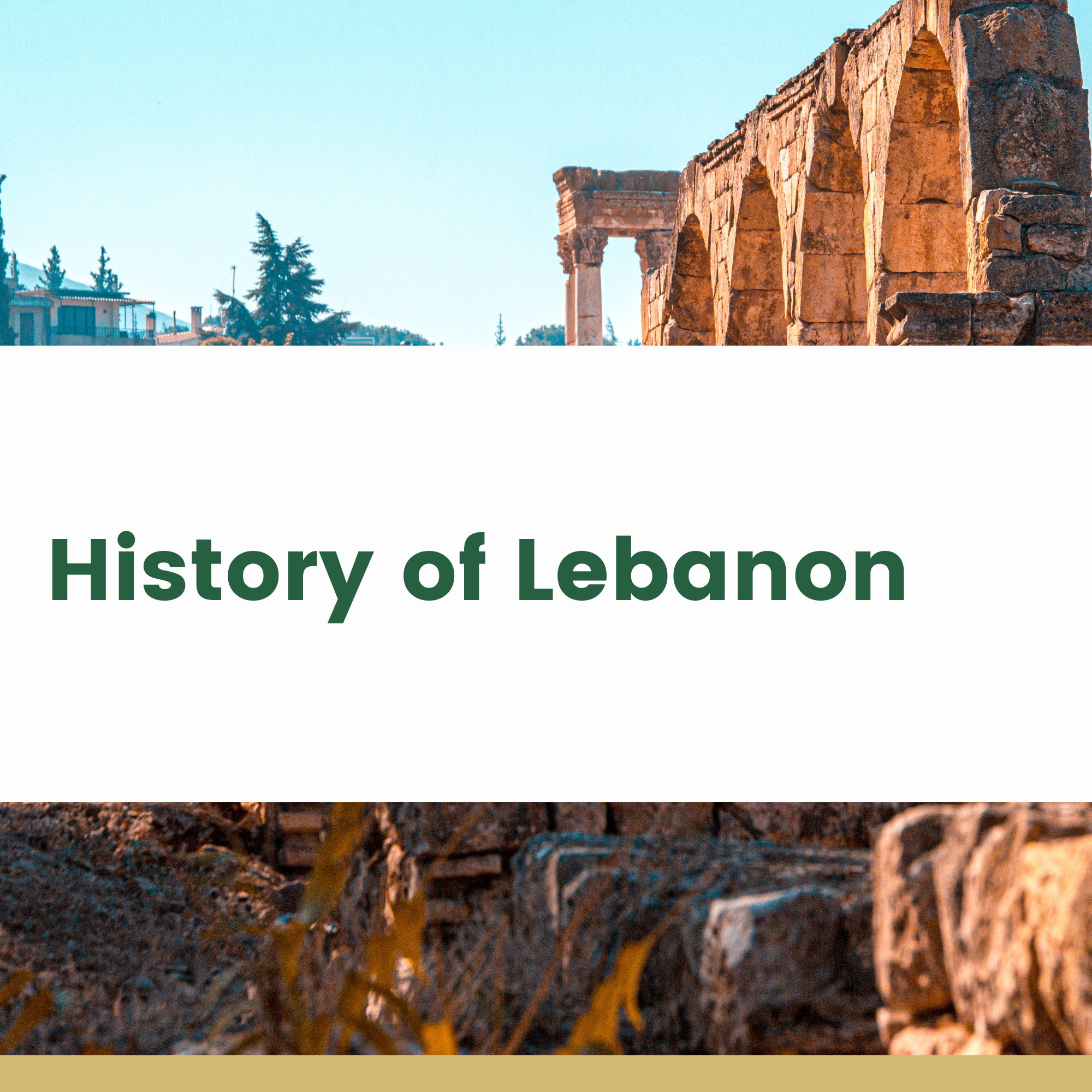
A brief History of Lebanon
Nestled in the eastern Mediterranean, Lebanon stands out as a land of timeless history. It is an area where Europe, Asia and Africa come together – all intertwined by centuries worth of legacies left behind by civilizations that once owned this Middle Eastern country. The seafaring Phoenicians are credited with being its first inhabitants sometime around 1500 BC; they were known for their maritime capabilities and established numerous settlements along the coast including Tyre & Sidon. Subsequent empires such as Persians, Greeks & Romans followed after which gave it name ‘Phoenicia’ before becoming part of Rome’s dominion during antiquity times.
Lebanon’s history spans many centuries, marked by conquest and transformation. In the 7th century AD it was conquered by Arab Muslims who brought with them Islam; various Arabic dynasties subsequently reigned over Lebanon for hundreds of years up to the 19th century when it came under Ottoman control. This period saw a vast development in trade and culture within its cities as well as economic growth which laid foundation for independence at end of WWI from League of Nations. Although during subsequent decades there were struggles due to political unrest, today Lebanon is an independent nation leading progress through industries such as tourism and banking that show potential despite lingering challenges resulting from domestic conflict past international wars nearby countries have endured or are enduring currently.
In the first half of the 20th century, Lebanon made strides towards independence from France and its impressive economic growth earned it a reputation as “the Switzerland of the Middle East.” Unfortunately, these accomplishments were later overshadowed by decades-long civil war that erupted in 1975. During this tumultuous period marked with sectarian violence, thousands perished while much infrastructure was destroyed. By 1990 however, lasting peace had been secured and rebuilding efforts began anew within Lebanon’s borders.
Following the end of Lebanon’s civil war, a new political system was formed from power-sharing between its various religious sects that has allowed for economic growth and stability since then. Yet in recent years terrorism and Syrian refugees escaping their country’s own conflict have posed considerable difficulties to this captivating land with myriad layers of culture deeply embedded into society over centuries. But despite these obstacles, Lebanon proudly continues on as an ever changing nation amidst tumultuous times.
Historic Places in Lebanon
Here is a list of historical places to visit in Lebanon:
- The ancient city of Baalbek: Home to the renowned Temple of Jupiter and other towering ancient relics, Baalbek stands amongst an awe-inspiring reminder of its past. Once reserved for worshiping the Phoenician god Baal, this remarkable city – nestled in Lebanon’s Bekaa Valley – has since become a UNESCO World Heritage Site with an appeal that stretches throughout history as it welcomes visitors from near and far.
- Byblos, a picturesque coastal city steeped in history and culture. Wander through its old cobbled alleyways that still have remnants of the ancient Phoenicians or explore mystical Crusader castles with breathtaking views of the Mediterranean Sea. Also known for some delectable seafood restaurants and alluring sandy beaches, Byblos is an unforgettable experience.
- Tucked away in the colorful and rugged Qadisha Valley lies a sacred natural wonder: The Cedars of God. This ancient grove is full of cedar trees believed to be over 3,000 years old – far predating even their use as an essential timber source for Phoenicians centuries ago. Their striking presence continues to make them a symbol dear to those from Lebanon, so much that they are now recognized by UNESCO as part of its World Heritage Sites – making it popular among hikers looking for majestic vistas and nature-lovers seeking breathtaking beauty outside their doorsteps.
- The National Museum of Beirut is a fascinating destination that unearths the rich past of Lebanon. From Phoenician to Islamic relics, coins and jewelry, visitors can explore an extensive selection of artifacts from its ancient as well as modern history in this unique museum located at the center of the city.
Lebanon is a country of fascinating juxtapositions, both in its geography and culture. From the Mediterranean to Mount Lebanon, this land has long been an enthralling passageway for great ancient civilisations like Phoenicians, Greeks, Romans Arabs and Ottomans – allowing it to develop into a melting pot of vibrant cultural influences with lasting monuments across all faiths from Christianity through Judaism to Islam.